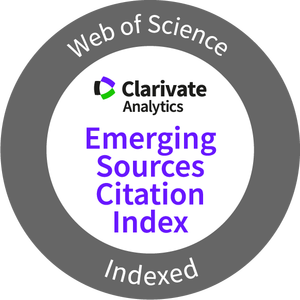Special Wrestling Fitness Test: a specific test for Olympic wrestling applied to youth wrestlers
Abstract
The aim of this study was to perform a specific test of wrestling to assess physical condition of athletes and comparing physical performance test lab. To do an adaptation of Special Judo Fitness Test (SJFT) it was performed by developing a new specific exercise called Special Wrestling Fitness Test (SWFT). To diagnose the anaerobic capacity of the subjects we used the Wingate test of 30" lower body, while aerobic capacity was evaluated with the Yo-Yo test. Finally SWFT test was performed with the purpose of evaluating the physical capacity of the fighters. This study was conducted with 62 athletes in the Spanish national team wrestling in the ranks of junior and cadet.
The wrestling has anaerobic has high resistance requirements, average power values recorded for this sample of 510,1 ± 134,2 W and reaching maximum values of 705,8 ± 166,9 W. During aerobic test covered a distance mean 911.6 ± 355.7 m VO2max estimated reaching 44.0 ± 2,9 ml / kg / min. In the case of the specific test of wrestling, parameters related to both anaerobic capacity as aerobic capacity, athletes got a SWFT index 16,37 ± 1,31. High levels of correlation was also reported between specific test results SWFT and anaerobic performance (r = -0,396; p = <0,01) and aerobic (r = 0,470; p = <0,01). These results indicate that this new test could be used to measure more specific and valid physical ability of the fighters, avoiding having to resort to laboratory tests whose gestures and energy demands away from the specificity of wrestling.
Downloads
-
Abstract1289
-
PDF (Español (España))1688
The works and papers that are published in this Journal are subject to the following terms:
1. The Publication Service of the University of Murcia (the publisher) has the Publication Rights (Copyright) to the published papers and works, and favors and permits the reusing of the same under the license indicated in point 2.
© Servicio de Publicaciones, Universidad de Murcia, 2013
2. The papers and works are to be published in the digital edition of the Journal under the license Creative Commons Reconocimiento-No Comercial-Sin Obra Derivada 3.0 España (legal text). The copying, using, spreading, transmitting and publicly displaying of the papers, works or publication are permitted as long as: i) the authors and original sources (Journal, publisher and URL of the publication) are quoted; ii) it is not used for commercial benefit; iii) the existence and specifications of this users license are mentioned.
3. Conditions of Self-Archiving. It is permitted and encouraged that the authors spread electronically the pre-print (before printing) and/or post-print (the revised, evaluated and accepted) versions of their papers or works before their publication since this favors their circulation and early diffusion and therefore can help increase their citation and quotation, and also there reach through the academic community.
The works and papers that are published in this Journal are subject to the following terms:
1. The Publication Service of the University of Murcia (the publisher) has the Publication Rights (Copyright) to the published papers and works, and favors and permits the reusing of the same under the license indicated in point 2.
© Servicio de Publicaciones, Universidad de Murcia, 2013
2. The papers and works are to be published in the digital edition of the Journal under the license Creative Commons Reconocimiento-No Comercial-Sin Obra Derivada 3.0 España (legal text). The copying, using, spreading, transmitting and publicly displaying of the papers, works or publication are permitted as long as: i) the authors and original sources (Journal, publisher and URL of the publication) are quoted; ii) it is not used for commercial benefit; iii) the existence and specifications of this users license are mentioned.
3. Conditions of Self-Archiving. It is permitted and encouraged that the authors spread electronically the pre-print (before printing) and/or post-print (the revised, evaluated and accepted) versions of their papers or works before their publication since this favors their circulation and early diffusion and therefore can help increase their citation and quotation, and also there reach through the academic community.

















